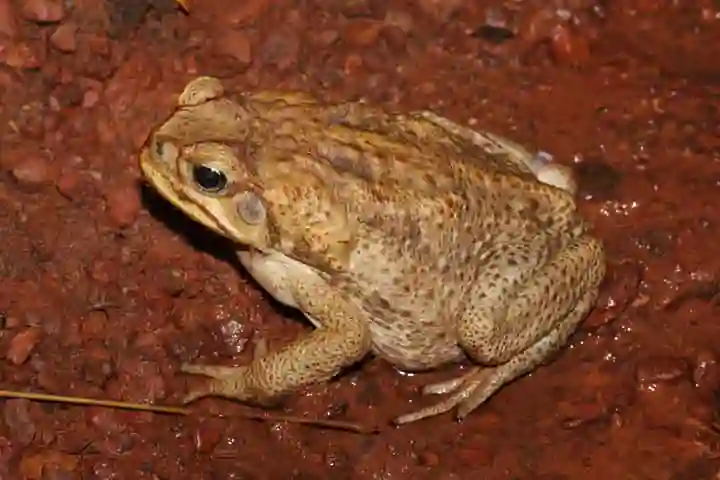A mere amphibian creature has got a nation worried. We are talking about cane toads who have made the conservationists of Taiwan anxious as these non-native creatures which are highly toxic can play havoc with the ecosystem, according to a report in livescience.com.
Native to the Americas, the cane toad or Rhinella marina is found from Peru’s Central Amazon to Texas’ Rio Grande Valley but at the starting of the 20th Century it was introduced in many nations across the planet. These include Australia, large parts of the Pacific and the Caribbean among others.
Identifiable by its yellow and brown skin which have irregular warts, the size of the adult cane toads varies from 3.5 to 5.9 inches or 9 to 15 centimetres in length. The creature when in peril releases a toxin which is milky-white and known as bufotoxin from their skin — oozing from glands which are located behind the eyes – which is fatal to most beings.
It is through photographs of the cane toad shared online by a local resident did scientists learn about the invasion of the creature in a small town in the central mountain range of Taiwan. On seeing the image, the Taiwan Amphibian Conservation Society researchers proceeded to the farm to look into the matter.
Talking to AFP, amphibian scientist at Taiwan's Endemic Species Research Institute, Lin Chun-fu said: “A speedy and massive search operation is crucial when cane toads are first discovered.” He added that they not only rapidly replicate and “have no natural enemies here in Taiwan”.
Landing at the farm, the team of scientists found 27 toads within its immediate vicinity. Following that, more than 200 have been apprehended in the surrounding area.
Yang Yi-ju from National Dong Hwa University and a toad expert who organised the search said: “I was shocked and worried when they found more than 20 [right away].”
Even though these creatures are native to 14 countries, they are as on date found in more than 40 nations, making them part of the 100 Worst Invasive Species drawn up by the Invasive Species Specialist Group — an international advisory body of scientists and policy experts.
Also read: Cannibalism In Australian Cane Toads Triggers Evolutionary Changes
What makes the cane toads very accomplished invasive beings is their innate ability to replicate fast and also circumvent predation.
With the ability to mate all through the year, the female toads can lay nearly 30,000 eggs in one go. Besides being predators, these toads can also scavenge, giving them plenty of options to eat. Devoid of any predators in nature, coupled with the ability to proliferate rapidly, they can damage ecosystems quite seriously.
Earlier because of their ability to devour pests, the toads were released by people like for example in Australia where they were introduced in 1935 to feed cane beetles (Dermolepida albohirtum) that destroyed the sugarcane fields. Having got rid of the beetles their booming population couldn’t be controlled.
Experts feel that the cane toad invasion recently in Taiwan could be due to pet trade as these creatures are not only popular in the country but also used in traditional medicines. With these amphibians being banned in 2016, they were bred illegally and sold. Researchers feel the captured toads were either the ones abandoned by the black market traders or those who escaped.
Also read: Kakapos – night birds that survived even after inbreeding
The scientists also feel that the problem must have started months back but went unnoticed.
The researchers think the invasion may have started months ago and gone unnoticed until now. Yi-ju told AFP: "Taiwanese farmers generally ignore toads and even look favourably at toads when they find them, because they help rid the land of pests and are also a good luck symbol. It never occurred to them that this is an invasive species from a foreign land."
Having contained the species now, the experts are keeping their fingers crossed as they are still not certain. "Next spring during mating season is when we [will] truly know for sure if we have contained it," Yi-ju told the news agency.



















